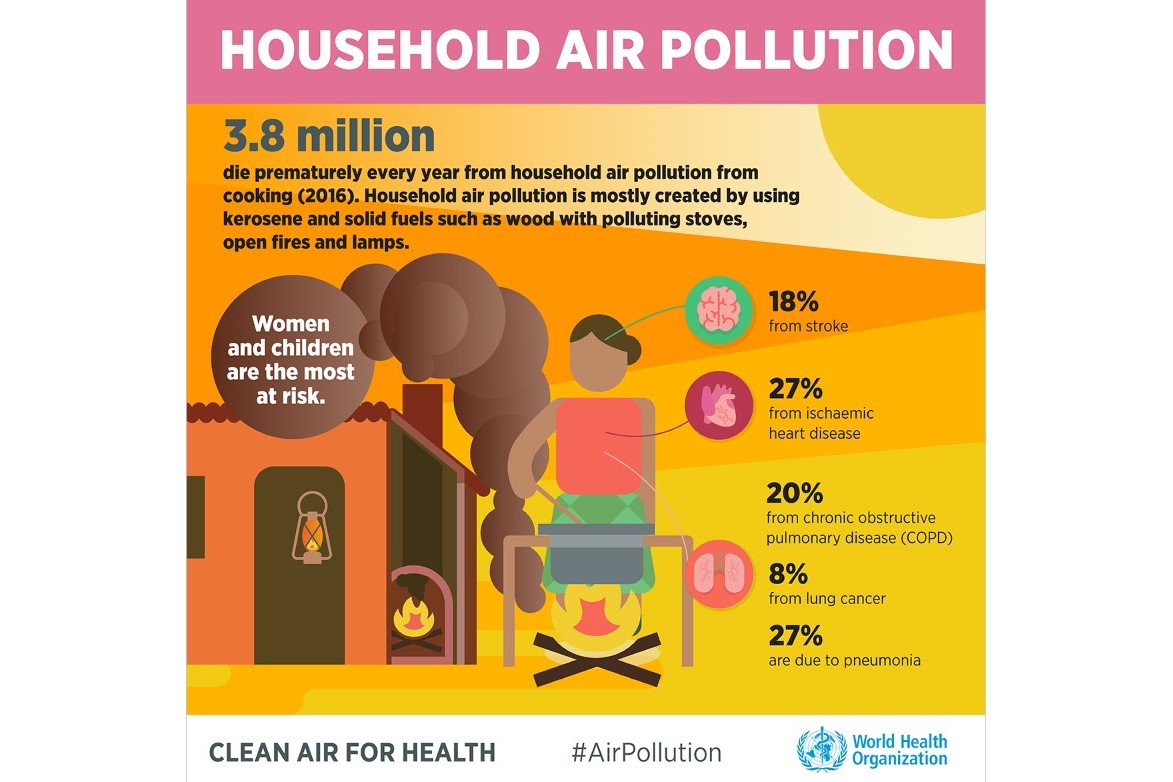Air pollution gets a lot of attention these days, and rightly so. The degradation of air quality can lead to an increased risk of cancer, strokes, and asthma. The American Lung Association estimates that nearly 134 million people in the US are at risk of disease and premature death because of air pollution. That’s over 40%of the population.
When you think of air pollution, images of smoggy streets packed with traffic likely spring to mind, but you may not be aware that indoor air pollution poses a more significant threat to many Americans than outdoor air pollution. Odds are, especially as stay-at-home orders have kept many of us indoors, you spend well over 90% of your time indoors, so this is a big problem.
The Environmental Protection Agency has said that “a growing body of scientific evidence has indicated that the air within homes and other buildings can be more seriously polluted than the outdoor air in even the largest and most industrialized cities.” When you think about how many hours of the day you spend breathing in the air in your own home, that’s pretty scary.
"There are three basic strategies to improve indoor air quality"
Environmental Protection Agency
According to the WHO, there are 3.8 million deaths every year as a result of household exposure to smoke from dirty cookstoves and fuels. Americans spend 90% of their time indoors, so it’s important to ask - how can increase the quality of indoor air? We spoke to the Environmental Protection Agency (EPA) to get their tips on how to improve indoor air quality. If you want to find out what indoor air pollution is, why it’s a problem, and how to reduce it, just keep reading.

"There are three basic strategies to improve indoor air quality (IAQ): source control, improved ventilation, and filtration. IAQ best practices include testing your home for radon, reducing indoor asthma triggers, preventing mold by controlling moisture, installing and maintaining carbon monoxide alarms, and using and maintaining ventilation systems."
Although there are fantastic appliances such as the best air purifiers which can purify your indoor air, it’s also worth considering tackling air pollution at the source. Gas grills, for example, can be adjusted to decrease the amount of emissions.
Using and maintaining ventilation systems
When it comes to keeping your house ventilated, never forget about the difference an open window can make. Ventilation can reduce the number of pollutants in your home’s indoor air, but many avoid cracking open a window for long periods of time because this could lead to risks to home security, or change your home’s temperature.
"House plants are not a practical means of pollution control.
EPA
When we spoke to the EPA, they emphasized that you should ‘avoid ventilation with outdoor air when outdoor air pollution is high or when it makes your home too cold, hot, or humid. So, what about natural air conditioners? Many claim that houseplants are a great natural air conditioner that absorb impurities in the air. However, the EPA told us "house plants are not a practical means of pollution control. The most effective ways to improve your indoor air are to reduce or remove the sources of pollutants and to ventilate with clean outdoor air."

"In addition, research shows that filtration can be an effective supplement to source control and ventilation. Using a portable air cleaner and/or upgrading the air filter in your furnace or central heating, ventilation, and air-conditioning (HVAC) system can help to improve indoor air quality."
"To find out your current air quality, check the AirNow.gov website, or download the free AirNow app."
Some of the best tower fans such as the Dyson Pure Cool Tower Fan have in-built air purifiers which can clean your indoor air while also keeping your home cool. Another method to bring fresh air into your home is window air conditioners or central air conditioner units.
Although there are fantastic appliances which can purify your indoor air, it’s also worth considering tackling air pollution at the source. Gas grills, for example, can be adjusted to decrease the amount of emissions.
Preventing mold
"The key to mold control is moisture control."
EPA
The best mold test kits can detect spores and mold, but also offer testing to identify the type of mold and give you suggestions on removing mold from your home. This is important, as mold can produce irritants and even toxic substances. Mold can cause respiratory issues and exacerbate asthma and allergy problems.

According to the EPA, "the key to mold control is moisture control." If you have mold in your home, it’s likely that you’re living in a damn environment. The best dehumidifiers can take down the moisture levels in your home and tackle mold at the source. However, you’ll need to make sure this is properly cleaned, as it won’t take the place of an air purifier.
Testing for radon
Radon is a toxic, colorless radioactive gas which can cause some types of cancer. It can seep in from the ground and become trapped in houses, but you can test for it with a radon testing kit, which can be found on the EPA website.

Radon distribution indoors varies nationwide, and is illustrated by this map. However, even if you live in an area with low radon levels, it’s still important to check for your specific home.
Installing and maintaining carbon monoxide alarms
At low concentrations, carbon monoxide can cause fatigue and chest pain for people with heart disease. As concentration increases, it can reduce brain function and cause impaired vision and coordination, so it’s incredibly important to make sure your home has safe levels.
Carbon monoxide alarms are essential for monitoring the pollution in your home. Carbon monoxide comes from gas stoves, tobacco smoke, car exhausts and gasoline powered equipment.

